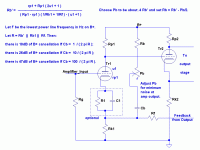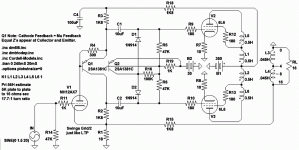I don't know how to say any more clearly: there is NOTHING to see in the text box referring to the image. Zero. Zip. Nada. Zilch. Nichts. Rien. F-A.
In your text box is the img tags surrounding a link. That's why I think your issue is your browser- mine works normally in Chrome or Firefox.
In your text box is the img tags surrounding a link. That's why I think your issue is your browser- mine works normally in Chrome or Firefox.
Googling "IE10 for xp" leads you to a number of sites. But all say "IE10 for Windows 7." Having XP, I aint gonna risk it.
Can someone - anyone - kindly post a screen capture of what it looks like after you've set up the image you want to display with "manage attachments", right before you hit "submit reply"?
All you need to do is use the "prt scrn" feature shown on your keyboard (in my case I hold down the fn and insert keys), open Paint, paste, and save the file. You can then upload it using "manage attachments."
Thanks in advance.
Can someone - anyone - kindly post a screen capture of what it looks like after you've set up the image you want to display with "manage attachments", right before you hit "submit reply"?
All you need to do is use the "prt scrn" feature shown on your keyboard (in my case I hold down the fn and insert keys), open Paint, paste, and save the file. You can then upload it using "manage attachments."
Thanks in advance.
Stajo, thanks anyway.
Yes, SY, I already understand fully that you see nothing in the text box. You needn't repeat yourself.
But you may see something else outside the text box that I don't. Something that is so common to you that you aren't even thinking about it. But something that I don't see that would give me some kind of clue as to what the problem is.
Won't you please post a screen shot? All you need to do is use the "prt scrn" feature shown on your keyboard (in my case I hold down the fn and insert keys), open Paint, paste, and save the file. You can then upload it using "manage attachments."
If for some reason you can't or won't do this, let me know, and I'll stop bugging you.
Yes, SY, I already understand fully that you see nothing in the text box. You needn't repeat yourself.
But you may see something else outside the text box that I don't. Something that is so common to you that you aren't even thinking about it. But something that I don't see that would give me some kind of clue as to what the problem is.
Won't you please post a screen shot? All you need to do is use the "prt scrn" feature shown on your keyboard (in my case I hold down the fn and insert keys), open Paint, paste, and save the file. You can then upload it using "manage attachments."
If for some reason you can't or won't do this, let me know, and I'll stop bugging you.
 View attachment New Text Document.txt
View attachment New Text Document.txt
Here's a shot of what my screen looks like before I hit "Submit Reply." Notice anything missing?
OK, that did it! I just have to edit out the "attach" tags that somehow automatically get added to my post and then I get the thumbnails!
Thanks to all who helped and sorrry to bother you.
Thanks as well --- this may be useful information for me too.
I don't have a web page I can post to and "insert image." How do I upload?
ImageShack® - Online Photo and Video Hosting
Reducing B+ Noise in Amplifiers with Cathodynes
In an amplifier with a balanced, well-designed Cathodyne, what portion of the noise N on the B+ rail gets passed on to the output? We can’t eliminate all of N in the Cdyne. But if we could arrange for the same level and phase of noise to be on both the plate and cathode, the differential output stage would cancel this common mode signal.
To figure out how to do this, let’s start by looking only at the noise that enters the C-dyne through its plate resistor. We can do this by grounding its grid through a large capacitor. The ground-referenced impedance zpg looking into the plate forms a voltage divider with the plate resistor Rp. So the noise at the plate must be N * zpg / (zpg + Rp). But what is zpg?
It has been suggested that zpg in such a Cdyne is about 1/gm. That would mean that the noise at the plate would be a very small N * (1/gm) / (1/gm + Rp). But a quick trip to bench shows us that this is not correct; the noise N appears virtually unattenuated on the plate. So how do we find zpg?
We use Thevenin (see note below). We divide the plate voltage by the current that would flow through an AC short between the plate and ground. Eliminating the contribution of Rp, we find that zpg = Rk * ( 1 + mu ) + rp, where rp is the triode’s plate resistance and Rk the cathode resistor. zpg is much larger than Rp, and that explains why the plate noise is virtually unchanged from that on the B+ rail.
At the cathode, we must first take into account that even if we replaced Rk with a high impedance DC current source, the triode alone would reduce the noise N to N / ( 1 + mu ). The noise is further reduced by the voltage division of Rk with the impedance zkb between the cathode and B+. Again we call on Thevenin. Eliminating the Rk contribution, we find that zkb = (rp + Rp) / ( 1 + mu ). Bench measurements are consistent with a cathode noise of a very small ( N / ( 1 + mu ) ) * Rk / (Rk + zkb).
Now let’s remove the grid-to-ground capacitor so we can see the total noise at the C-dyne P and K. The grid has some noise level f * N from the input stage, where f is between 0 and 1. Because of the property of superposition in a linear system, we just have to add (a very slightly attenuated version of) this signal to the tiny signal already at the cathode. Being a balanced C-dyne, the negative of this new signal is added to the one already at the plate, and so there we now have approximately ( 1 – f ) * N.
Almost always, f is less than ½. To bring it up to ½ so the P and K signals are identical, a series network of Rb and Cb can be connected between the input stage cathode and B+ as shown in the following schematic. The schematic also shows a calculation of the component values. Other than bringing f up to ½, Rb, Pb and Cb have no significant effect on circuit performance.
In conclusion, we see how to virtually eliminate the B+ noise on the output of a common type of Cathodyne-equipped amplifier. As a result of analyzing how to do this, we determine that zpg is a lot bigger than 1/gm – indeed, than Rp. We did this without making a single (controversial in the thread which contains this post) impedance measurement.
________________________________________________________________________________________________________________________________________
I’m applying the Institute of Electrical and Electronics Engineers’ definition of Mr. T’s Theorem provided in post 1037 of this thread.
In an amplifier with a balanced, well-designed Cathodyne, what portion of the noise N on the B+ rail gets passed on to the output? We can’t eliminate all of N in the Cdyne. But if we could arrange for the same level and phase of noise to be on both the plate and cathode, the differential output stage would cancel this common mode signal.
To figure out how to do this, let’s start by looking only at the noise that enters the C-dyne through its plate resistor. We can do this by grounding its grid through a large capacitor. The ground-referenced impedance zpg looking into the plate forms a voltage divider with the plate resistor Rp. So the noise at the plate must be N * zpg / (zpg + Rp). But what is zpg?
It has been suggested that zpg in such a Cdyne is about 1/gm. That would mean that the noise at the plate would be a very small N * (1/gm) / (1/gm + Rp). But a quick trip to bench shows us that this is not correct; the noise N appears virtually unattenuated on the plate. So how do we find zpg?
We use Thevenin (see note below). We divide the plate voltage by the current that would flow through an AC short between the plate and ground. Eliminating the contribution of Rp, we find that zpg = Rk * ( 1 + mu ) + rp, where rp is the triode’s plate resistance and Rk the cathode resistor. zpg is much larger than Rp, and that explains why the plate noise is virtually unchanged from that on the B+ rail.
At the cathode, we must first take into account that even if we replaced Rk with a high impedance DC current source, the triode alone would reduce the noise N to N / ( 1 + mu ). The noise is further reduced by the voltage division of Rk with the impedance zkb between the cathode and B+. Again we call on Thevenin. Eliminating the Rk contribution, we find that zkb = (rp + Rp) / ( 1 + mu ). Bench measurements are consistent with a cathode noise of a very small ( N / ( 1 + mu ) ) * Rk / (Rk + zkb).
Now let’s remove the grid-to-ground capacitor so we can see the total noise at the C-dyne P and K. The grid has some noise level f * N from the input stage, where f is between 0 and 1. Because of the property of superposition in a linear system, we just have to add (a very slightly attenuated version of) this signal to the tiny signal already at the cathode. Being a balanced C-dyne, the negative of this new signal is added to the one already at the plate, and so there we now have approximately ( 1 – f ) * N.
Almost always, f is less than ½. To bring it up to ½ so the P and K signals are identical, a series network of Rb and Cb can be connected between the input stage cathode and B+ as shown in the following schematic. The schematic also shows a calculation of the component values. Other than bringing f up to ½, Rb, Pb and Cb have no significant effect on circuit performance.
In conclusion, we see how to virtually eliminate the B+ noise on the output of a common type of Cathodyne-equipped amplifier. As a result of analyzing how to do this, we determine that zpg is a lot bigger than 1/gm – indeed, than Rp. We did this without making a single (controversial in the thread which contains this post) impedance measurement.
________________________________________________________________________________________________________________________________________
I’m applying the Institute of Electrical and Electronics Engineers’ definition of Mr. T’s Theorem provided in post 1037 of this thread.
Attachments
An unintended consequence of matching impedances with 1/Mu attenuated
cathode feedback was that equal splitting of ripple also occurred. I don't
need to cap couple a portion of ripple down from the supply rail, because
the correct portion bleeds through the conceretina. Kept in balance by Mu
at the plate vs 1/Mu resistive divider at the cathode.
My R1, your Rk1: same things, same portion of ripple for common mode.
Even with ripple now in common mode, the output stage is not immune
to intermodulation with it.
When grids reach AB2, and deblocker Q2 D1 D2 comes into play:
Anything common mode is made (erroneously in the case of ripple)
to be equal and opposite. In AB2, all my canceled ripple is back...
cathode feedback was that equal splitting of ripple also occurred. I don't
need to cap couple a portion of ripple down from the supply rail, because
the correct portion bleeds through the conceretina. Kept in balance by Mu
at the plate vs 1/Mu resistive divider at the cathode.
My R1, your Rk1: same things, same portion of ripple for common mode.
Even with ripple now in common mode, the output stage is not immune
to intermodulation with it.
When grids reach AB2, and deblocker Q2 D1 D2 comes into play:
Anything common mode is made (erroneously in the case of ripple)
to be equal and opposite. In AB2, all my canceled ripple is back...
Attachments
Last edited:
The best you can hope would be a split that divides the ripple
evenly and presents it to the push-pull stage in common mode.
That is exactly what the circuit does.
Yes, confirmed by analysis and simulation.That is exactly what the circuit does.
Brad
That is exactly what the circuit does.
Cool then. Guess I misunderstood when it got all mathematical and stuff.
- Status
- This old topic is closed. If you want to reopen this topic, contact a moderator using the "Report Post" button.
- Home
- Amplifiers
- Tubes / Valves
- phase splitter issue


